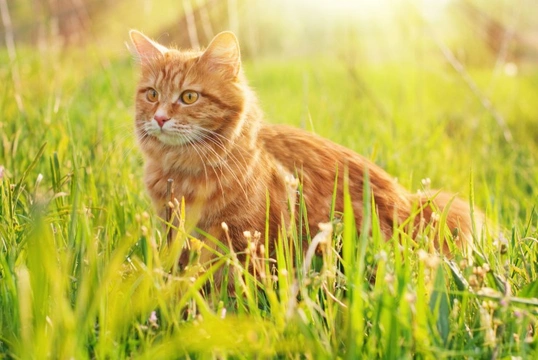
Six symptoms of feline skin cancer
Skin cancer is something that most people are aware of when it comes to ourselves and our children, and we all know about advice to use sunscreen, avoid sunbathing during the hottest hours of the day, and to avoid causing skin damage from too much exposure to the sun. But skin cancer can also affect cats too, and its symptoms can be variable and hard to spot for the uninitiated.
Knowing when something is amiss with your cat can be challenging in itself, because cats are very good at masking pain and discomfort, and also, cats can be prone to scrapping with other cats and getting into scrapes that can lead to a range of lumps and bumps developing, which can easily be written off or overlooked.
In this article, we will look at six of the most common symptoms of feline skin cancer in more detail, in order to help you to spot a problem in the offing and get your cat help quickly in order to give them the best chance of effective treatment. Read on to learn more.
What type of cats can develop skin cancer?
Any cat can theoretically develop skin cancer, and a range of factors including genetics and exposure to sun will all play a part. Some cats are more prone to developing skin cancer than others, and those at particularly high risk of the condition include hairless cats that do not have fur to protect them from the sun, and cats with pink skin.
Even indoor-only cats can potentially develop skin cancer, particularly if they spend a lot of time sunbathing in well-lit windows!
The lighter the colour of your cat’s fur, skin and eyes, the higher their risk of potentially developing a skin cancer with exposure to the sun, such as white cats with blue eyes, and those with pink noses. However, even for light coloured cats, skin cancer is by no means a given or something to be overly afraid of, providing that you know what to look out for and how to monitor your cat’s skin for changes and get them checked out early.
Six signs of feline skin cancer
How and where skin cancer develops will vary from cat to cat, and the fact that it can come in so many shapes and forms means that it can be hard to spot. Here are six of the main symptoms of feline skin cancer to look out for.
Skin lumps and bumps
Skin cancer usually causes skin abnormalities such as lumps, bumps, and changing areas of the skin that can look somewhat like moles. By no means all lumps, bumps or moles are likely to prove to be cancerous, but it is worth treating such problems with respect, just to be on the safe side.
Any new lump, bump or mole on the skin, or a mole that is growing or changing shape is worthy of further investigation, as these can all be potential signs of a localised skin cancer.
Check your cat over every month or so for changes in the colour or texture of the skin, and lumps, bumps and other anomalies under the fur.
Irritated areas
If your cat seems to be obsessively licking, chewing or scratching at a certain area of their skin, this may potentially indicate something amiss in that area. What the ultimate problem turns out to be can vary, and may simply be a particularly irritating fleabite or another minor issue, but it can also be an indication of the skin changes that can indicate a melanoma.
Bald spots
If your cat is bothering a certain area of their skin a lot, this may lead to localised fur loss in the area, along with redness and irritation. Again, this does not mean a definite diagnosis of skin cancer, but it is worth bearing in mind.
Slow healing
Many cats have a tendency to get into scrapes, and will come home fairly regularly with a minor scratch, mark or injury that clears up by itself in a few days. However, if your cat’s cuts and other minor injuries seem to bleed or weep a lot or take a long time to heal properly, or cause further complications, this can be an early warning of something more serious being amiss, including potentially skin cancer.
Lip and eyelid changes
The areas of the skin that are not covered by fur, such as the lips, eyelids and nose, are the most likely parts of the body to be affected by skin cancer. Look out for changes in the colour of the lips or eyelids, discoloured patches, or changes in texture.
Changes to the nose
The nose, particularly in cats with a pink nose, is one of the most common sites for skin cancer, so look out for reddening, darkening, and other changes that might indicate a problem. It can sometimes help to refer back to a picture of your cat, to confirm or deny any changes that have occurred over time.



